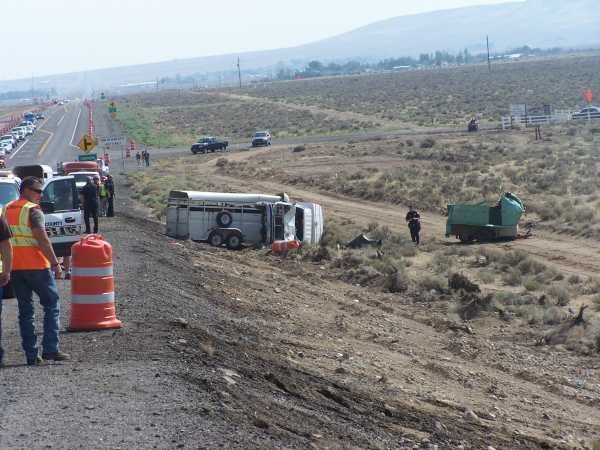|
This information sheet is primarily intended for persons associated with or working with the LRTC Technical Large Animal Rescue Team, however the information may be useful to other groups or private individuals who may wish to similarly equip their own technical large animal rescue team.
The initial priorities for responders when arriving at the scene of an overturned or damaged vehicle are to size-up and secure the scene (protect citizens present, prevent secondary accidents, identify hazards, etc,) provide care to human subjects, then address livestock issues if present. In many instances law enforcement will be occupied with traffic management and investigation, fire/EMS will be occupied with patient care and hazard control, and the technical large animal rescue team could be primarily on their own for dealing with large animals.
The TLAR team's first priorities include creating as safe of a scene as possible for everyone to operate in, which includes stabilizing the vehicle that the animals are in, containing any loose animals that could pose hazards, and preparing to properly contain animals once extricated.
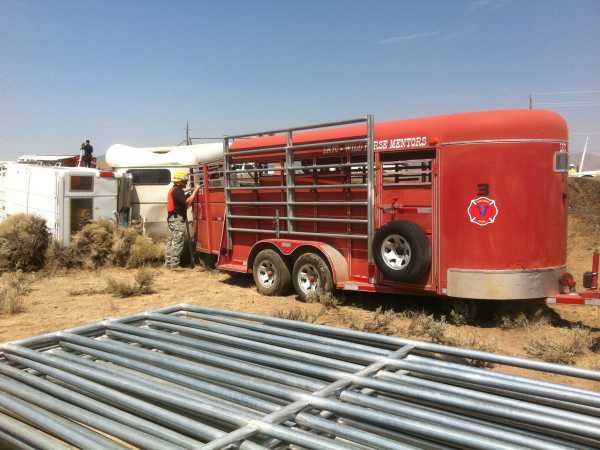
Fire/EMS personnel may be able to assist once their priorities have been addressed, however the TLAR team should still be responsible to ensure that the trailer involved in the accident has been suitably stabilized prior to any actions being taken.
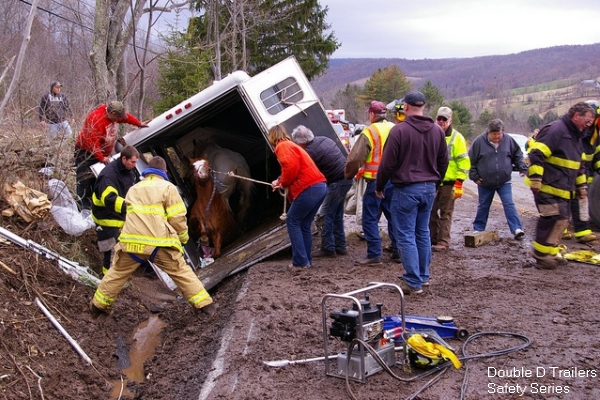
Stabilization may be achieved by placing suitable pieces of lumber for cribbing and by using other devices such as step chocks. In this information sheet we will discuss step chocks and related accessories.
Step chocks are basically large wedges with step faces that can be quickly driven under unstable vehicles to prevent movement, generally using a sledge hammer. Smaller wedges can be added to ensure a more snug fit.
We build our own step chocks based on standard industry recommendations.
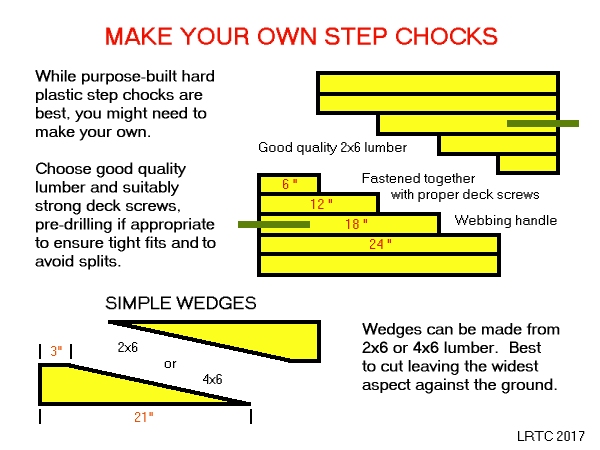
Our chocks use 2x6 lumber (2x8 on the Special Operations Support unit.) Purpose built chocks are also available made of hard plastic. The critical factor involving the proper use of either type involves whether all the steps are all the same width. Step chocks that have wider bases than their steps should only be used with the "steps" facing upward and their widest aspect on the ground to ensure maximum effective stabilization. Step chocks having consistent widths from top to bottom can be used with the steps facing downward if desired for better traction. Step chocks that are intended for upside down use need to be carefully constructed so that all the step edges contact the ground in order to properly distribute the load.
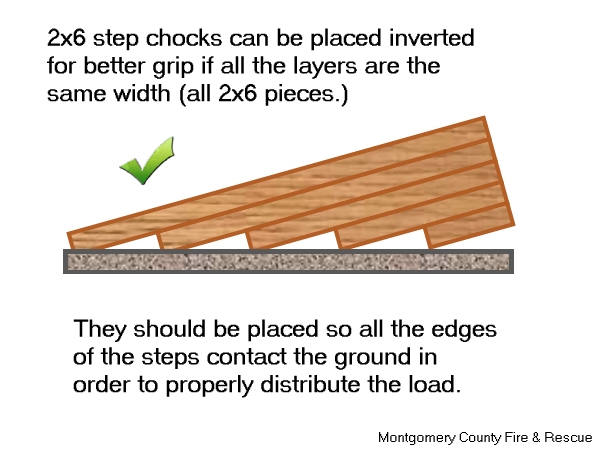
| 



